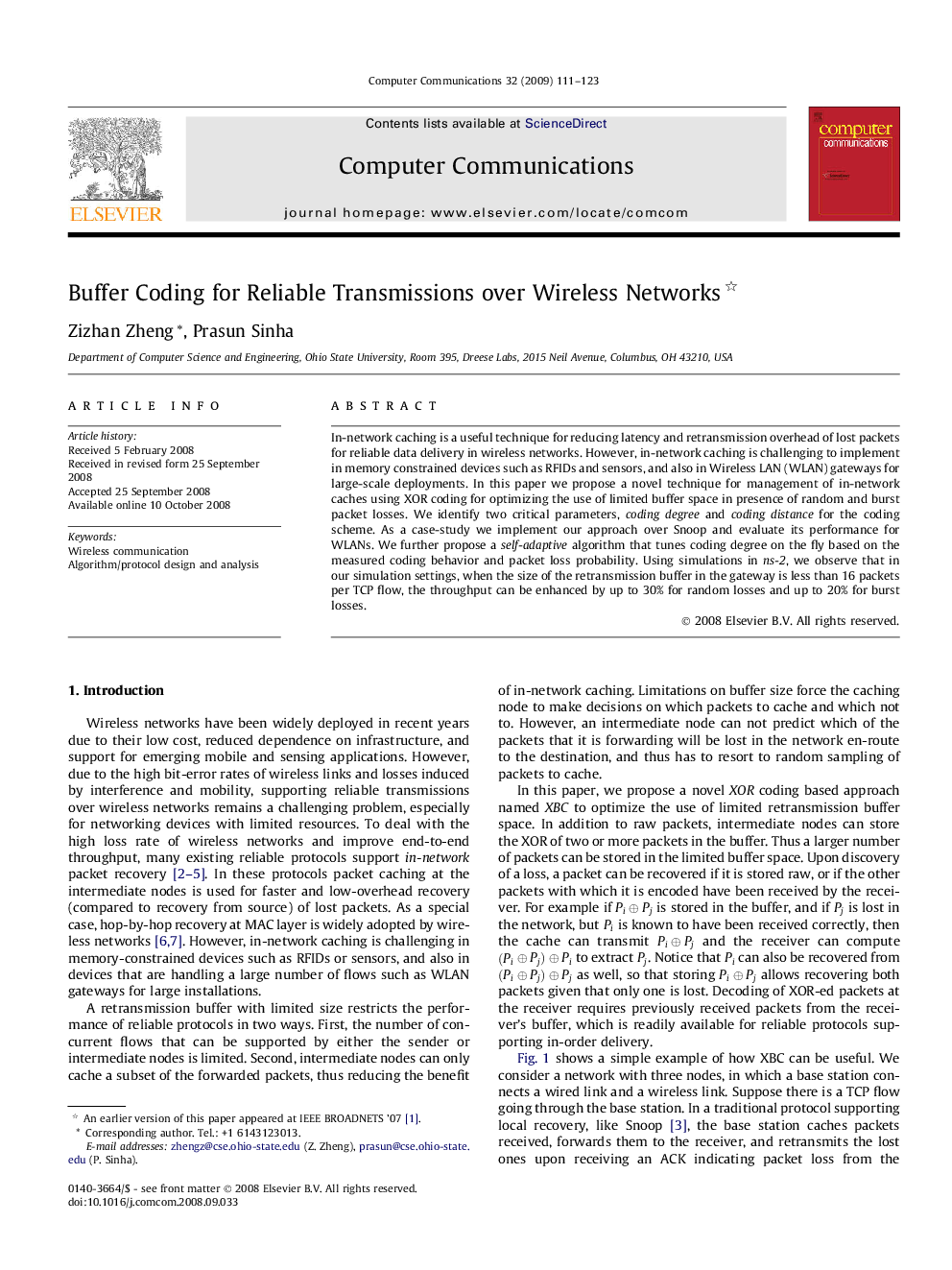| Article ID | Journal | Published Year | Pages | File Type |
|---|---|---|---|---|
| 449380 | Computer Communications | 2009 | 13 Pages |
In-network caching is a useful technique for reducing latency and retransmission overhead of lost packets for reliable data delivery in wireless networks. However, in-network caching is challenging to implement in memory constrained devices such as RFIDs and sensors, and also in Wireless LAN (WLAN) gateways for large-scale deployments. In this paper we propose a novel technique for management of in-network caches using XOR coding for optimizing the use of limited buffer space in presence of random and burst packet losses. We identify two critical parameters, coding degree and coding distance for the coding scheme. As a case-study we implement our approach over Snoop and evaluate its performance for WLANs. We further propose a self-adaptive algorithm that tunes coding degree on the fly based on the measured coding behavior and packet loss probability. Using simulations in ns-2, we observe that in our simulation settings, when the size of the retransmission buffer in the gateway is less than 16 packets per TCP flow, the throughput can be enhanced by up to 30% for random losses and up to 20% for burst losses.
